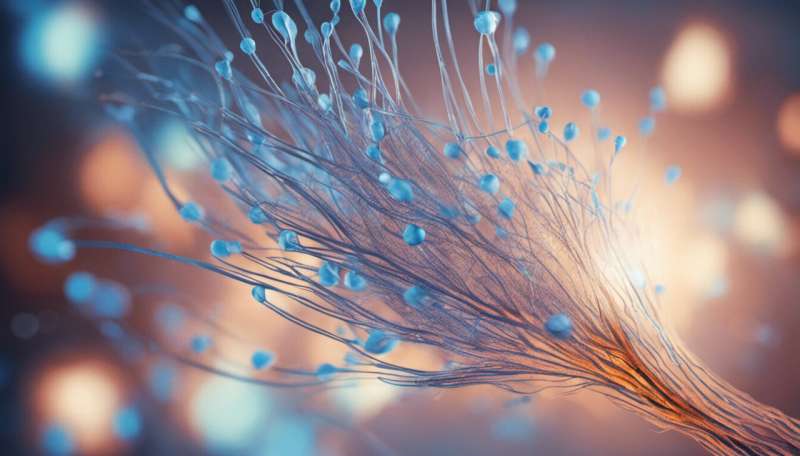Imaging the brain's energy usage

A team of researchers led by Kai-Hsiang Chuang of the A*STAR Singapore Bioimaging Consortium has developed a new imaging technique to measure the rate at which the brain consumes glucose, without using radioactively labeled 'tracer' molecules.
Brain cells use glucose as an energy source. Therefore, the rate at which they take up sugar from the bloodstream and break it down into its metabolites is an important indicator of cellular function and brain activity. Glucose uptake and metabolism are typically measured using a surrogate molecule called 2-deoxyglucose (2DG), containing radioactive carbon or fluorine. When injected, this molecule is taken up by brain cells and converted into 2DG-6-phosphate (2DG6P). Positron emission tomography (PET) or autoradiography is then used to detect the radioactivity levels throughout the brain, which provides a measure of glucose usage.
The technique developed by Chuang and co-workers is sensitive enough to detect levels of 2DG and 2DG6P without first having to label them with radioactive isotopes. It relies on a relatively new imaging method called chemical exchange saturation transfer (CEST) to amplify the magnetic signal produced when 2DG and 2DG6P exchange protons with water molecules.
The researchers tested the new technique, called glucoCEST, on live animals for the first time. They injected 2DG into rats and used nuclear magnetic resonance (NMR) to detect the CEST signal. They found that the signal changes with the concentration of 2DG and 2DG6P, and that it is reduced by the general anesthetic isoflurane, which suppresses brain activity. Their results also showed that the CEST signal is not affected by acidity levels of the blood and brain or related to changes in blood flow around the brain.
Imaging of glucose metabolism is widely used to aid diagnosis and evaluation of cancer and neurodegenerative diseases, such as Alzheimer's. Current methods involve radioactivity so they cannot be frequently used on the same patient and are typically not used on pregnant women and children. The glucoCEST method overcomes this problem, offering a new approach to the diagnosis and prognosis of such diseases.
"This method can achieve higher resolution than PET and is far more sensitive than other NMR techniques," says Chuang. "Imaging at higher magnetic fields would improve a limiting factor of the method: lower sensitivity of detection than radioactive tracers." Employing higher magnetic fields to improve the detection sensitivity would enable the use of lower doses of 2DG.
"We are now designing experiments to evaluate the feasibility of the method in humans," Chuang adds.
More information: Nasrallah, F. A., Pagès, G., Kuchel, P. W., Golay, X. & Chuang, K.-H., "Imaging brain deoxyglucose uptake and metabolism by glucoCEST MRI." Journal of Cerebral Blood Flow & Metabolism 33, 1270–1278 (2013). dx.doi.org/10.1038/jcbfm.2013.79
















